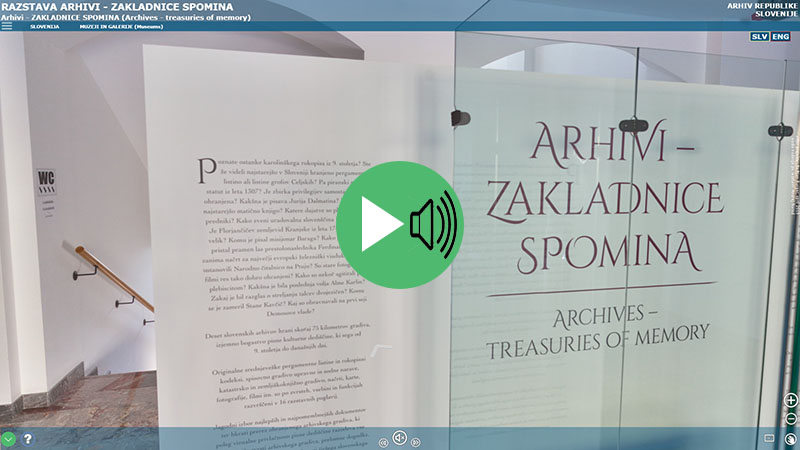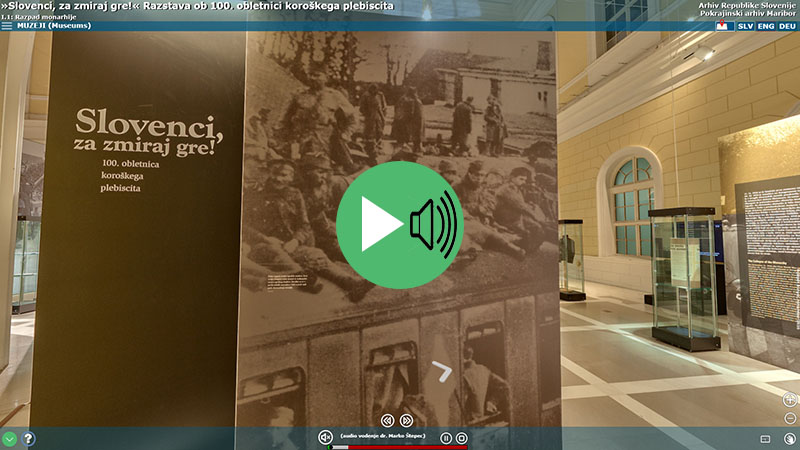
|
SLOVENIA | LJUBLJANA | MUSEUMS |

|
SLOVENIA | LJUBLJANA | MUSEUMS |
The Archives of the Republic of Slovenia
|
|
|
The Archives of the Republic of Slovenia is the central and largest archival institution in the Republic of Slovenia. The Archives of the Republic of Slovenia are based in Ljubljana, in the Gruber Palace, which is a Baroque cultural monument. In the second half of the 19th century, Virant's house was added on the north side. In the 1970s, a triangular inner courtyard was created with a complete renovation of the south-eastern part. It performs the tasks of the state archives and is a body within the Ministry of Culture. It takes care of the uniform professional implementation of public archival activities. The Archives of the Republic of Slovenia, as the state archives, protects public archives of state bodies, holders of public authority or public service providers provided by the state, the Bank of Slovenia and state and public funds, agencies and other legal entities established by the state. countries. The archive also protects private archives and film archives for the entire country. Keeps a summary record of public archives in the country and records of archives abroad and abroad, relating to Slovenia and Slovenes, and keeps records of public symbols, coats of arms, flags, seals, stamps and stamps at the national level. The archive protects public and private archival material in accordance with the Act on the Protection of Documentary and Archival Material and Archives and the Archival Material Act, which contains personal data on the patient's treatment. The tradition of the archives dates back to long before its establishment as an independent institution in 1945. Namely, by a decree of the National Government of Slovenia it was established as the Central State Archives of Slovenia on 31 October (the act entered into force on 7 November). renamed the changes several times: in 1953 to the State Archives of the People's Republic of Slovenia, in 1966 to the Archives of Slovenia, and in 1979 to the Archives of the Socialist Republic of Slovenia. It has borne its present name since 1990. The beginnings of the care for archival material in the first half of the 19th century took place similarly to other lands of the Austrian monarchy, of which we were an integral part until its collapse. In particular, documentary material was collected and inventoried by various institutions, societies and individuals. In 1859, the Historical Society for Carniola proposed the establishment of a provincial archive, and with the allotted storage space in the newly built building of the Provincial, today's National Museum in Ljubljana in 1887, the conditions for its operation were actually set. We are talking about the Carniola Provincial Archives as an integral part of the museum. During the period of the Kingdom of Yugoslavia, the State Archives was established in 1926, but it still functioned as an organizational unit of the museum. The First and Second World Wars in many ways slowed down organizational and personnel reforms, which would otherwise have led to the creation of an independent institution. Calls for the establishment of a public, central archive, which would unite the material of the Slovenian provinces, were present as early as the beginning of the 20th century, and even more so after 1918. But only the plans remained. The archive remained cramped in the museum, and its operation was mainly limited to the area of the former province of Carniola. He did not have his own staff, the work of the archivist was performed by the director of the National Museum, Josip Mal. In 1931, he listed the material for the first time, and just before the beginning of the Second World War, in 1939, he appointed the first independent archivist. The Central State Archives of Slovenia was established in November 1945 as an independent state institution under the direct supervision of the Minister of Education. He worked for the entire territory of Slovenia, as there were no other provincial archives, with the exception of the City Archives of Ljubljana, today's Historical Archives of Ljubljana. They were slowly established in the mid-1950s, but due to deficient regulations they did not form a complete archival network. In the years 1945–1953, the archive was hosted in the National Museum in Ljubljana, in the attic of the National and University Library and in the basements of disbanded offices in Ljubljana. In 1953, the premises on the first floor of Virant's house and Gruber's palace were put into use. In 1965, the archive finally took over the management of the entire complex between Levstikov trg, Zvezdarska and Rožna ulica. He started the adaptation more than a decade later, and in 1977–1979, and even earlier, in 1972–1976, he built the first dedicated archive warehouse in Slovenia. With restoration work on the staircase and frescoes in 1981, the restoration was largely completed. In 1994, the premises of the former barracks along Roška and Poljanska cesta were planned for the needs of the archive, which were partially renovated by 2006. Younger archival material was moved there, which was kept by the archive at as many as seven locations at the beginning of the third millennium. Gradually, t were added to the Archives of the Republic of Slovenia. i. special archives, which were abolished after the political changes of 1990; in the same year the Historical Archives of the Central Committee of the League of Communists of Slovenia, in 1992 the Archives of the Institute for the History of the Workers' Movement or the Institute for Recent History, and in 1998 part of the Archives of the Ministry of the Interior with material from the State Security Service. |
Archives - treasures of memory Review exhibition of Slovenian archival heritage (National Museum of Slovenia - Metelkova, 4 March – 10 May 2015)
|
 |
"Slovenes, it's about dying!" Exhibition on the occasion of the 100th anniversary of the Carinthian plebiscite on October 10, 2020 to April 11, 2021
|
 |